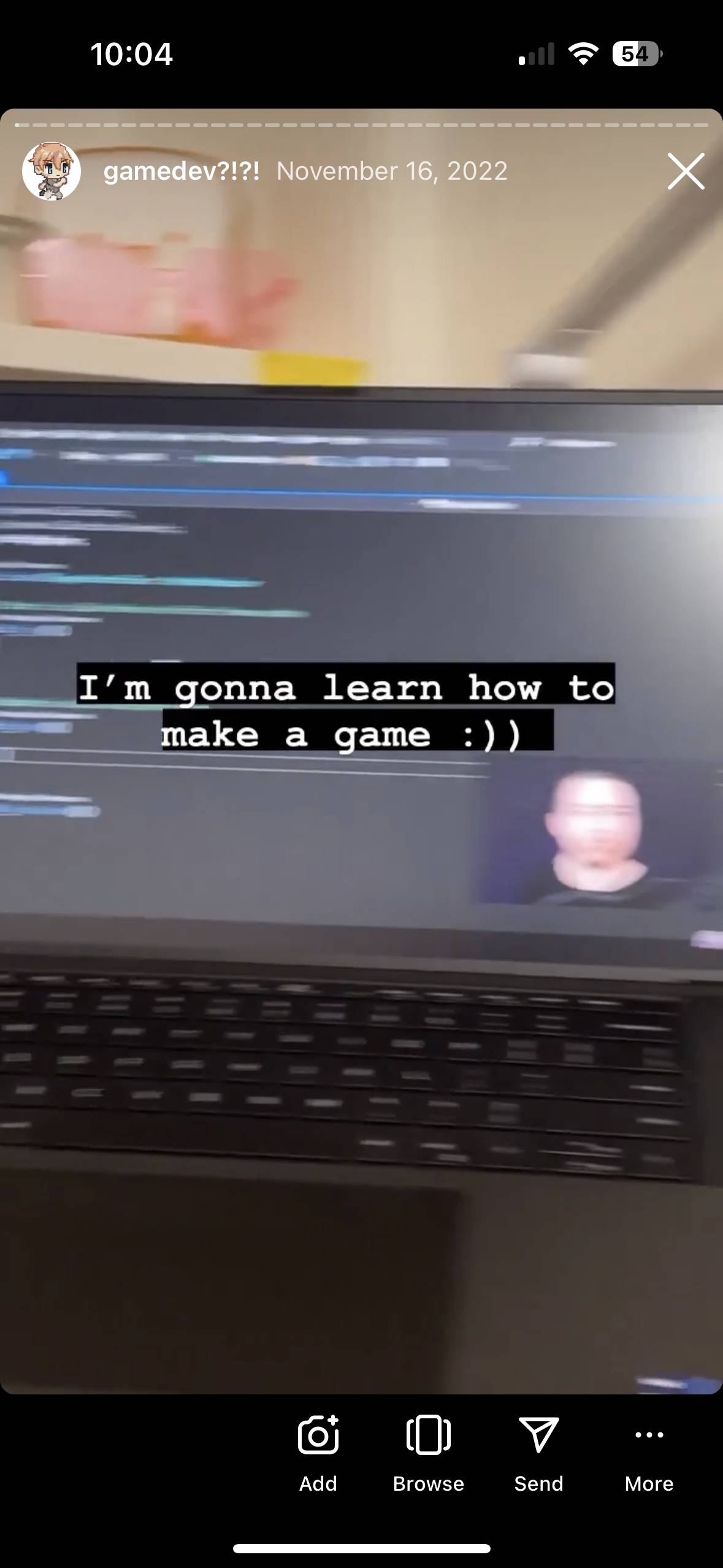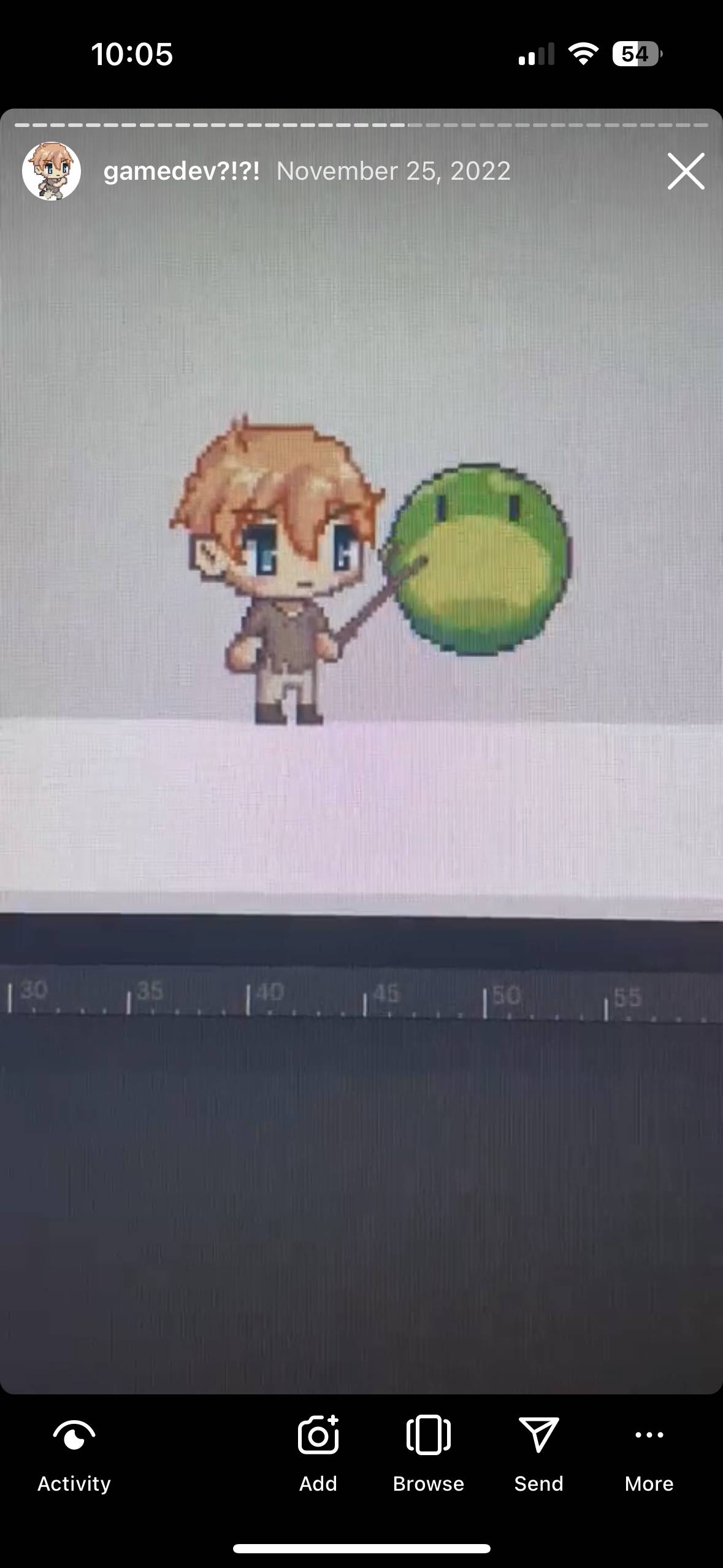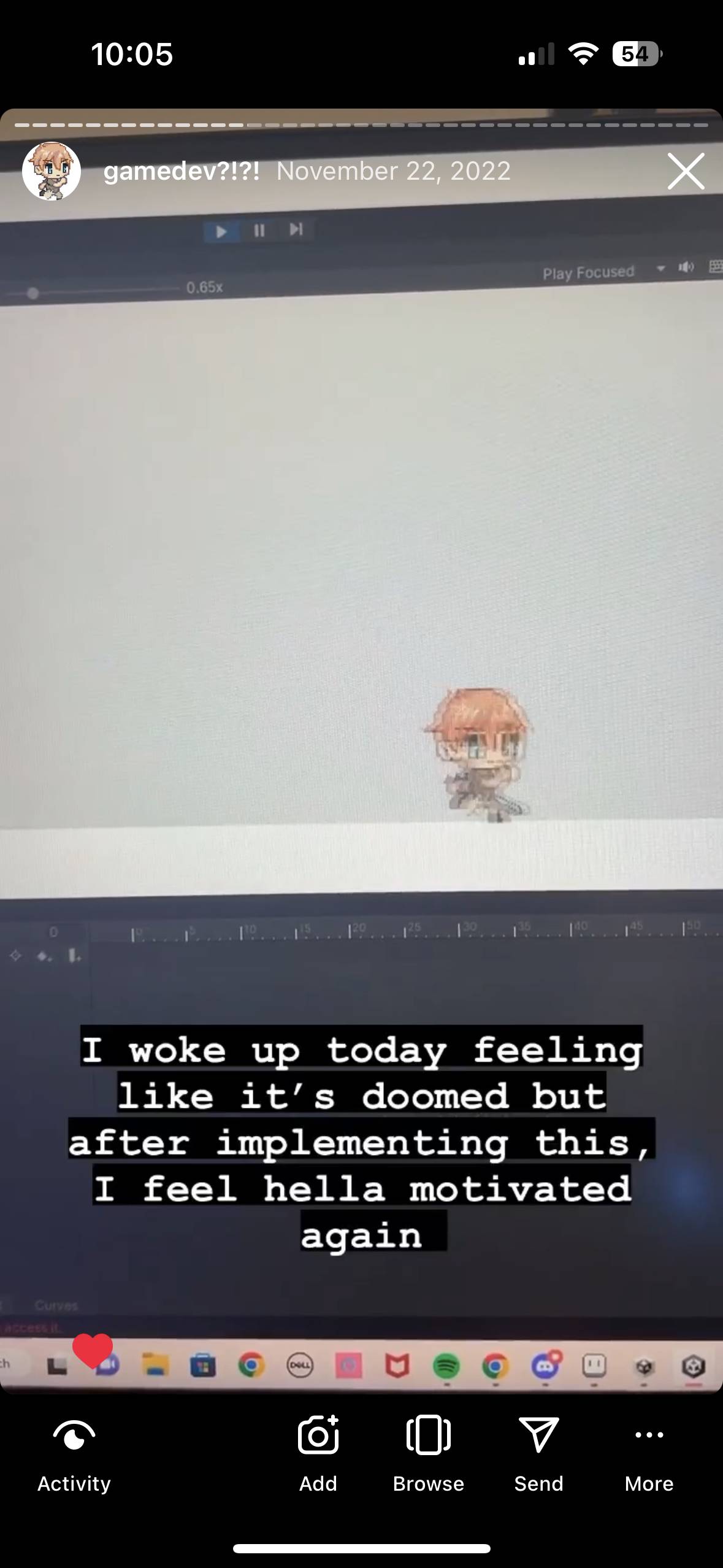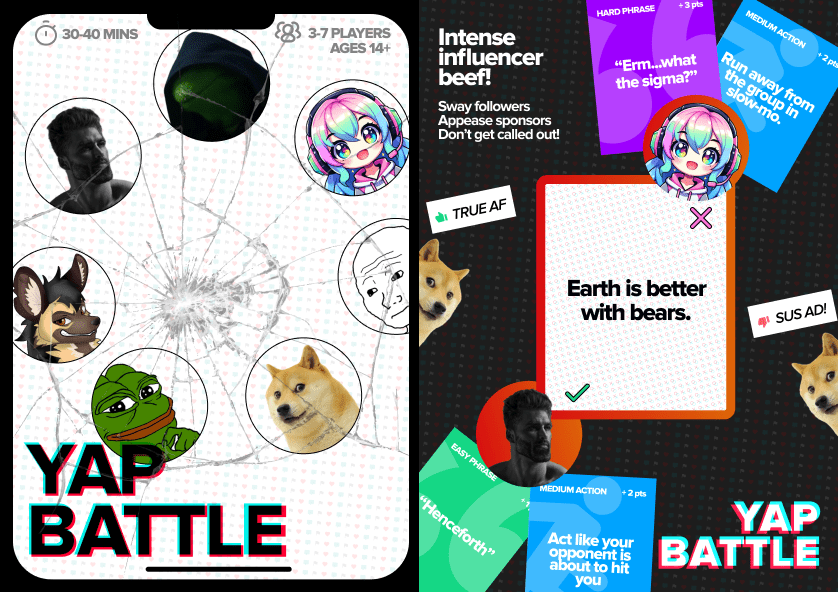I remember always being wishy-washy with what I wanted to do in the future. Sitting in my introductory engineering class in high school, I thought I would just be some type of engineer. I dug through a list of types of engineers– chemical, mechanical, electrical. I decided then to just become a biomedical or chemical engineer, and that’s what I went with up until freshmen year of college. Then, I found myself sitting in my room contemplating about my future everyday. I only have one undergraduate experience, and here I was balled up in my room everyday, questioning what I wanted to be, what I wanted to do, what I was even good at. It was then that I found one video of a 30-something-year old man who just started a video game development journey. His one year journey video inspired me, and I too, who enjoyed video games, found myself wanting to learn, despite not knowing anything about video game design and development.



Img. pictures from Nov 2022 when I decided I wanted to make games in the future
Before this class, I didn’t have much of a formal understanding of video game design. I had a picture of what was fun in my head. I knew loosely about what makes people like video games, art, music, storytelling, but I wasn’t really quite too familiar with the theory behind it all. Now, after taking this class, I find myself thinking more critically about video games and how to design them for people. Something I liked specifically was seeing the process of transforming a game from a concept to a final product– twice at that! In particular, thinking about what kind of mechanics to make within the game, the dynamics they create, and the resulting type of fun reinforced was a fun process. For example, thinking about the MDA-framework while making “Yap Battle” really taught me a lot, and seeing the game become even more fun for players after adding a narrative really went to show the value of understanding game design. To elaborate, the game initially started off as a simple debate game, but then we added a story– you’re an influencer now and the reason you’re sneaking in words or actions into your argument isn’t just because the game told you to, but because you’re trying to appease sponsors, while not being called out for being a cash-hungry sell-out. While simple, this new narrative not only made players more interested to play, but it let them immerse themselves as a character, something that we weren’t initially intending for. Genuinely seeing people laugh and complement the game after several hours of playtesting and iterations made the entire process worthwhile. In particular, I was really happy when someone told me that we should actually make the game a real thing and that they would buy it.

Img. Yap Battle’s awesome front and back cover with the influencer theming
Overall, with the development of this game and my P2 game (which I wanted to talk about, but now I’m already at 600 words…), I learned the importance of getting feedback, lots of it at incremental stages, because it truly helps you improve your design with each iteration. Additionally, it showed me that my single opinion of “fun” can be different across multiple unique perspectives. Now that I’m ending my sophomore year, I can wholeheartedly say I don’t sit in my room and contemplate about my future. I know the field of game design and development can be met with lots of struggles, whether that be a sexist work culture or long hours, but it’s shown to be worthwhile, and I’ll keep at it!



